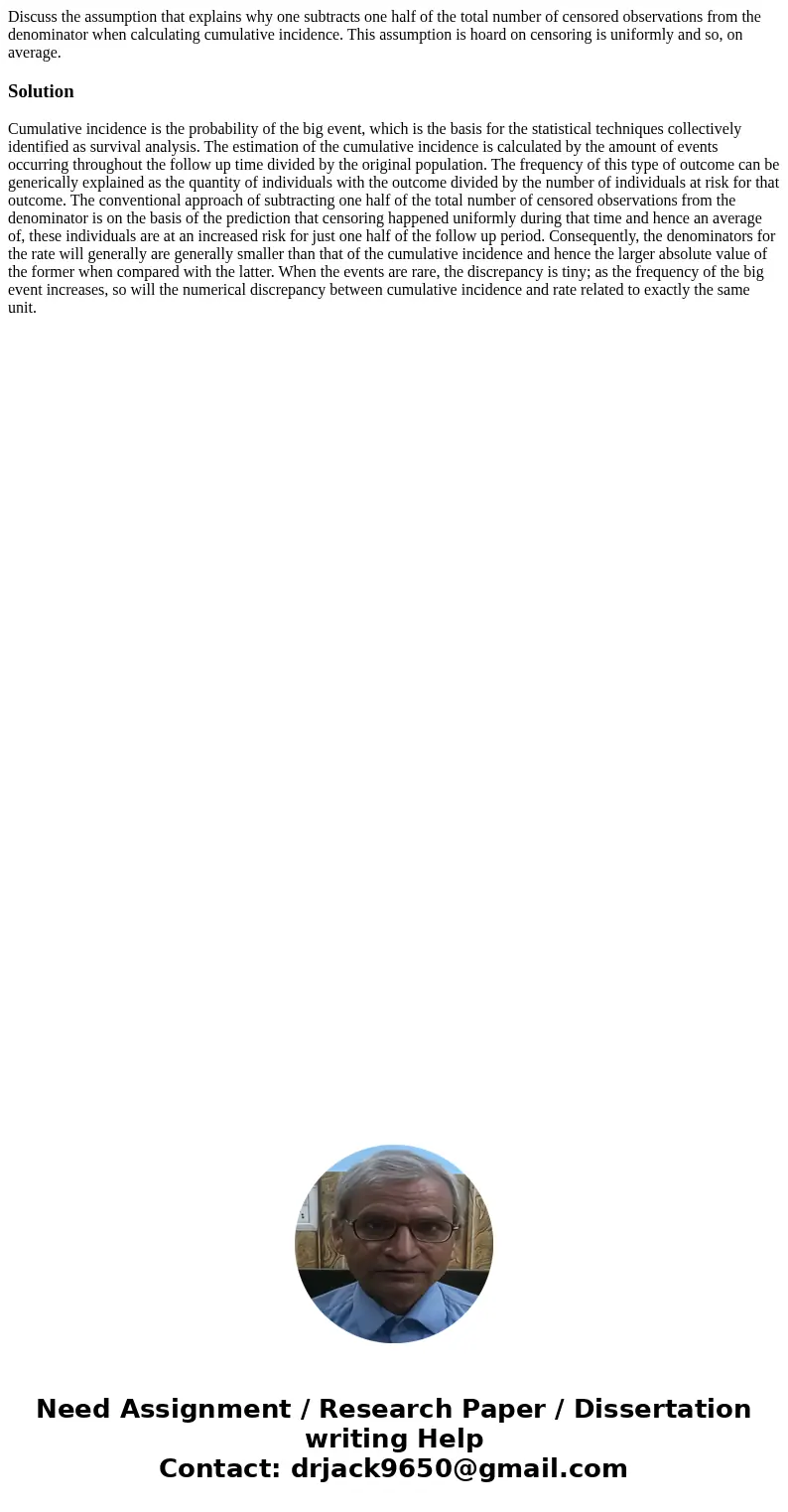Discuss the assumption that explains why one subtracts one h
Solution
Cumulative incidence is the probability of the big event, which is the basis for the statistical techniques collectively identified as survival analysis. The estimation of the cumulative incidence is calculated by the amount of events occurring throughout the follow up time divided by the original population. The frequency of this type of outcome can be generically explained as the quantity of individuals with the outcome divided by the number of individuals at risk for that outcome. The conventional approach of subtracting one half of the total number of censored observations from the denominator is on the basis of the prediction that censoring happened uniformly during that time and hence an average of, these individuals are at an increased risk for just one half of the follow up period. Consequently, the denominators for the rate will generally are generally smaller than that of the cumulative incidence and hence the larger absolute value of the former when compared with the latter. When the events are rare, the discrepancy is tiny; as the frequency of the big event increases, so will the numerical discrepancy between cumulative incidence and rate related to exactly the same unit.

 Homework Sourse
Homework Sourse